Survey Reveals Road Trip Trends Among Empty Nesters
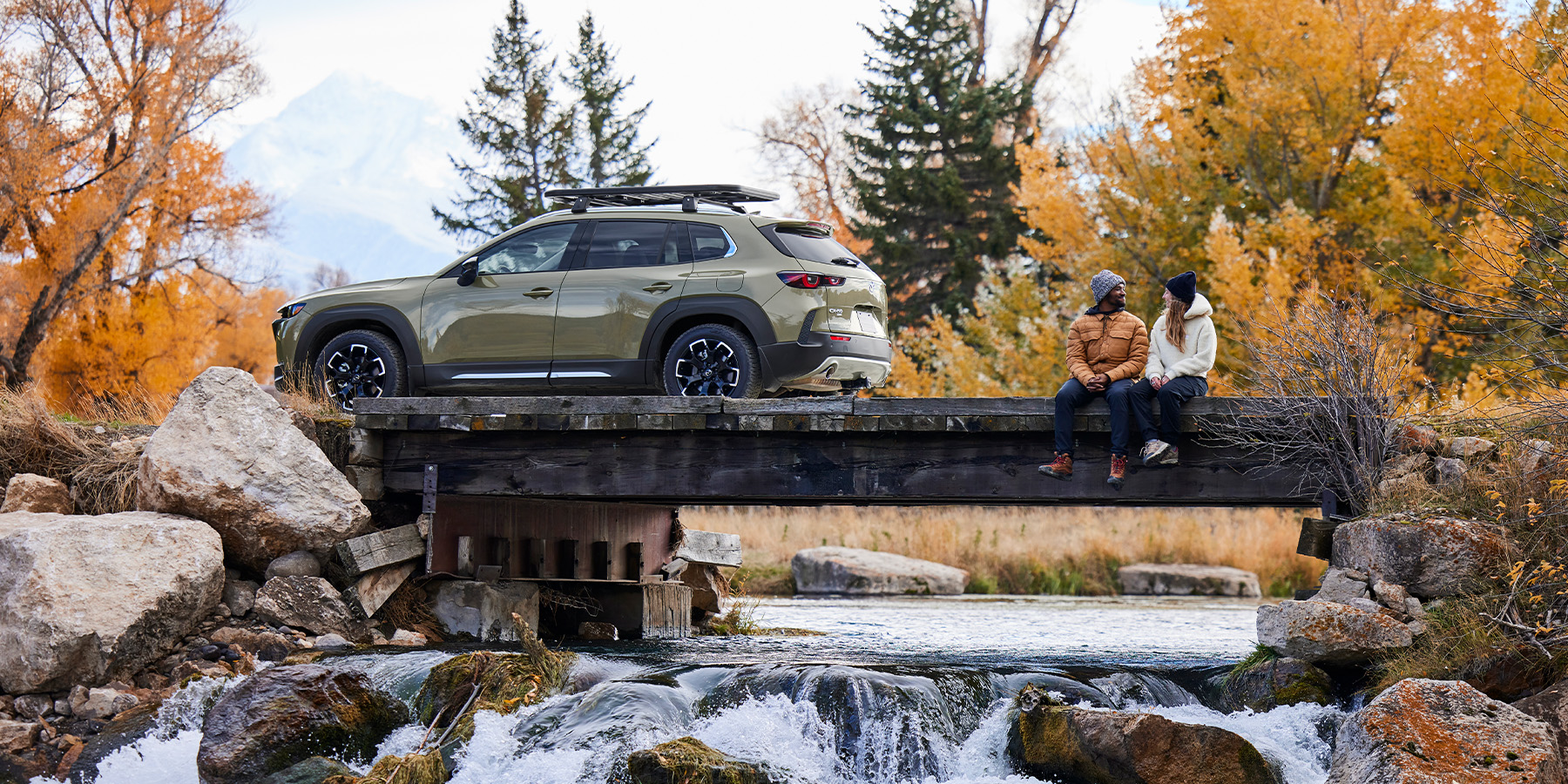
The sun begins to set in the rearview mirror, as a parent with children all grown up and moved out reminisces about the family road trips that once filled their summers. They remember a time when their young children, full of excitement, would press their faces against the car windows, captivated by the changing landscapes and frequently asking, “Are we there yet?”
Back then, road trips with the children could be challenging, with frequent rest stops and sibling quarrels. Nonetheless, every stop was an adventure, making the journey as memorable as the destination. These trips were abundant with opportunities to bond and create lasting family memories. Now, as empty nesters, they appreciate the flexibility to stop and smell the roses, taking the longer yet more scenic route while savoring each moment. These experiences highlight why empty nesters still love going on road trips.
Mazda recognizes that the journey is just as important as the destination. When designing vehicles, Mazda prioritizes comfort and efficiency without sacrificing dynamic performance, creating a serene driving experience, allowing travelers to fully unwind whether it’s a short drive or a 16-hour adventure through the mountains.
To gain a better understanding of the road trip experience, we conducted a survey of 2,523 U.S. adults. In this article, we’ll explore why empty nesters enjoy going on road trips, where they plan to go in 2024, the features they find most valuable in a road trip vehicle, and other interesting findings. To review the wider findings from the survey, see our Survey Uncovers American’s Road-Tripping Preferences Article.
Why empty nesters enjoy going on road trips
93% of empty nesters enjoy going on road trips. So why are they so drawn to hitting the open road, and how does it compare to other parental groups? Before we dive into this, it’s first important to clarify the methodology of our survey. We asked respondents to classify themselves as either:
● Parents with kids at home: People who have children who still live in their household
● Empty nesters: People who have children who live outside of their homes and have self-identified as “empty nesters”
● Others: Includes both non-parents and parents whose children do not live at home with them, but do not consider themselves “empty nesters”
We found that out of these three groups, empty nesters place a higher value on scenic views and flexibility when it comes to road trips. They are 9% more likely than others to say they enjoy taking road trips for scenic views and 12% more likely to say they like the flexibility and freedom to stop and explore different places along the way. Similar to others surveyed, adventure is also one of the top three reasons empty nesters enjoy taking a road trip.
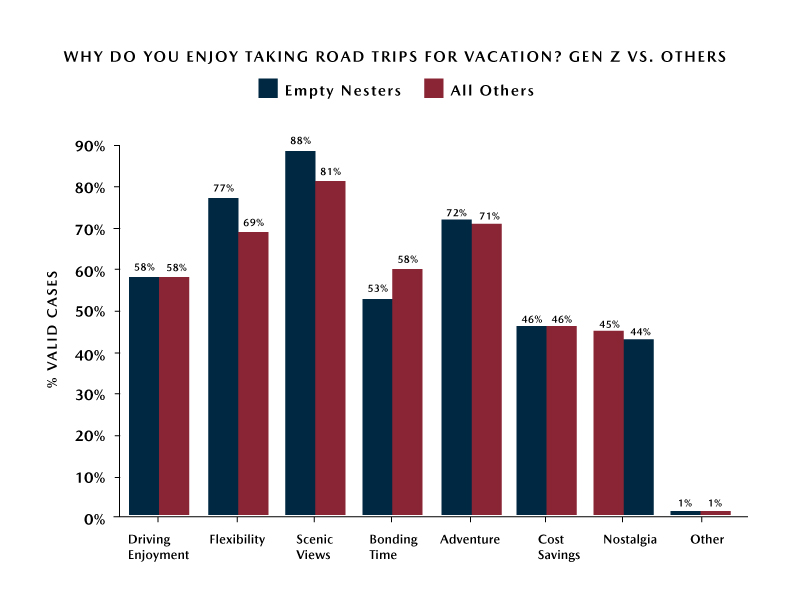
Where empty nesters are going on road trips in 2024
For parents whose children are grown and on their own, their top destination preferences reflect a desire to be out in nature and spend quality time with loved ones. When asked what type of destination they plan to drive to on their summer road trips, empty nesters selected the beach 45% of the time, followed by visiting family or friends (43%) and exploring the mountains (40%).
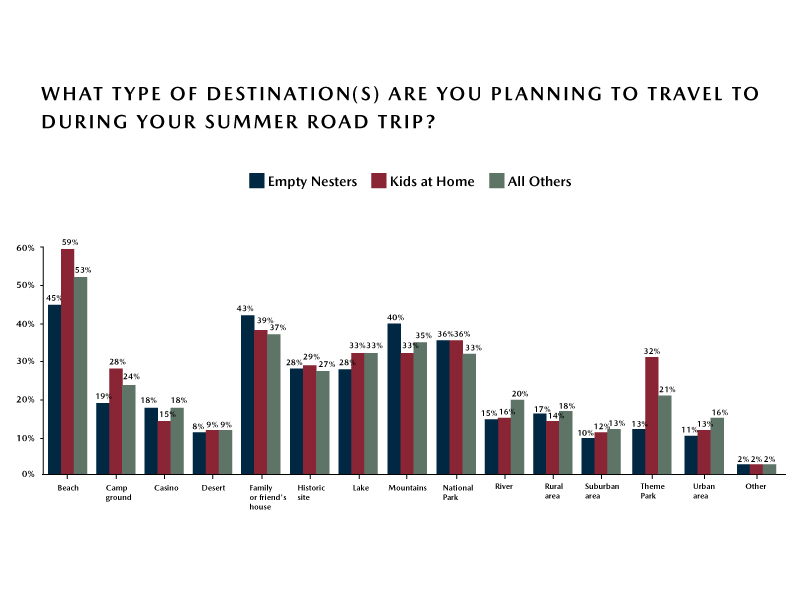
While the beach remained a top choice for all parental groups, distinctive trends emerged across empty nesters in their destination preferences. Empty nesters are 18% more likely to plan a road trip to the mountains compared to others. Unconstrained by the need for child-centric caution, this destination preference may indicate an ideal opportunity for this group to engage in more adventurous hikes or off-roading experiences.
Empty nesters are also 13% more likely to visit a family or friend’s house this summer compared to all others. With no young ones at home, their travels may involve reconnecting with dispersed family members or simply seeking the companionship of loved ones.
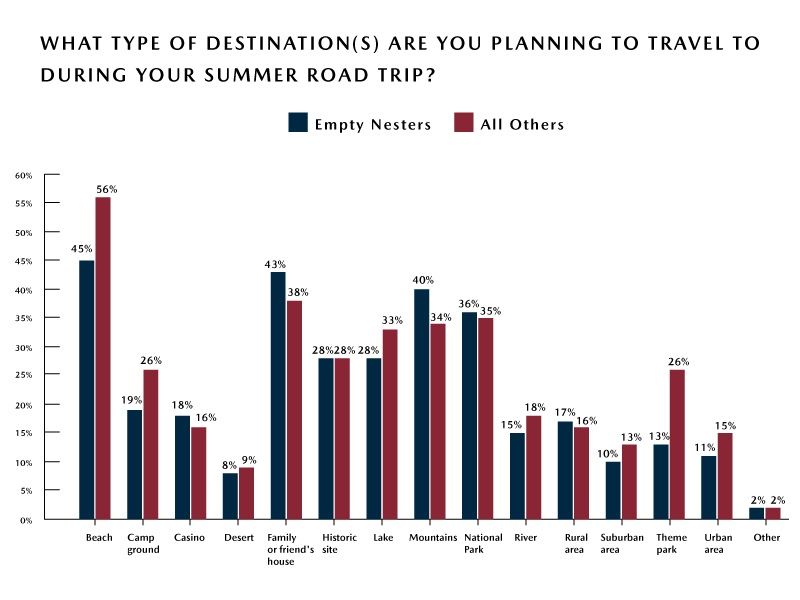
Empty nesters are more willing to drive longer distances on their road trips
No matter the destination, some empty nesters are more inclined to embark on longer road trips compared to other parental groups. While most empty nesters (43%) prefer road trips between 6 and 10 hours, they are also the most likely to say they are willing to drive 20 hours or more to reach their destination. Without children, fewer restroom and meal stops are required, allowing this group to opt for longer, more scenic routes.
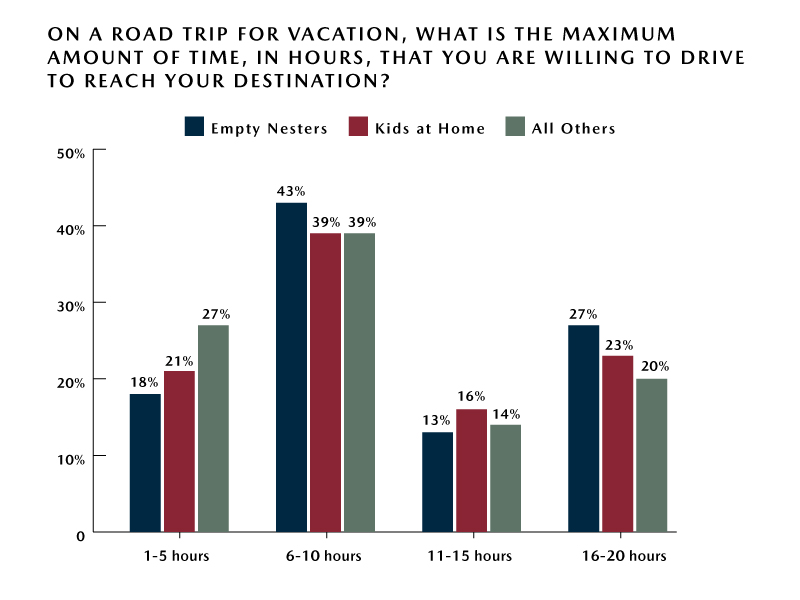
In fact, empty nesters are the least likely parental group to prefer taking the quickest route to their destination on a road trip, at 20% compared to parents with kids at home at 28%. This freedom allows them to take a more balanced approach when selecting a route to their destination, with 48% of empty nesters preferring this method compared to 41% of parents with children at home.
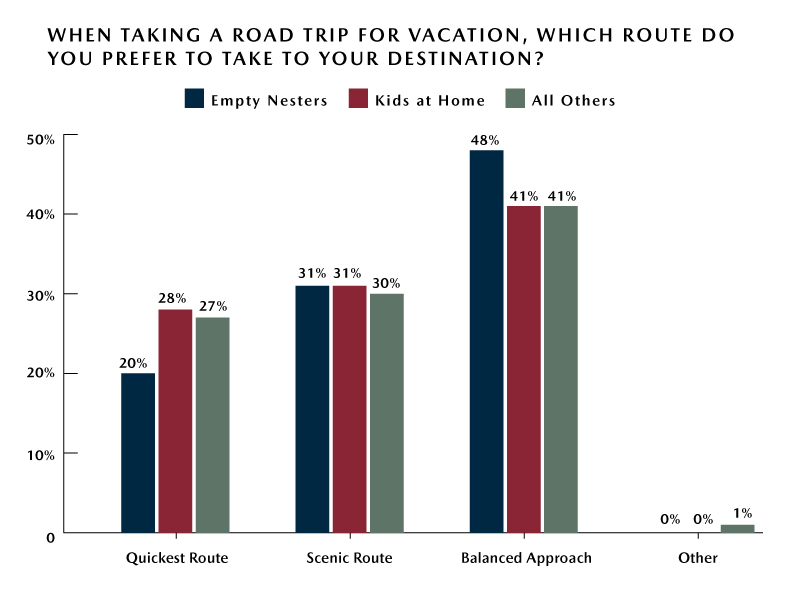
The ultimate road trip vehicle features according to empty nesters
Empty nesters prioritize a wider range of fundamental features when selecting a road trip vehicle, a perspective that sets them apart from other parental groups. The top vehicle types for empty nesters are 2-row SUVs or crossovers (37%), sedans (22%), and 3-row SUVs or crossovers (15%).
In particular, empty nesters are 23% more likely than others to say they are the most likely to take a 2-row SUV or crossover on a road trip.
With fewer passengers to tow around, empty nesters have different priorities when it comes to a road trip vehicle’s features. This group finds comfortable seating (92%), fuel efficiency (68%), and ample storage compartments and cup holders (57%) to be the most important baseline features in a road trip vehicle.
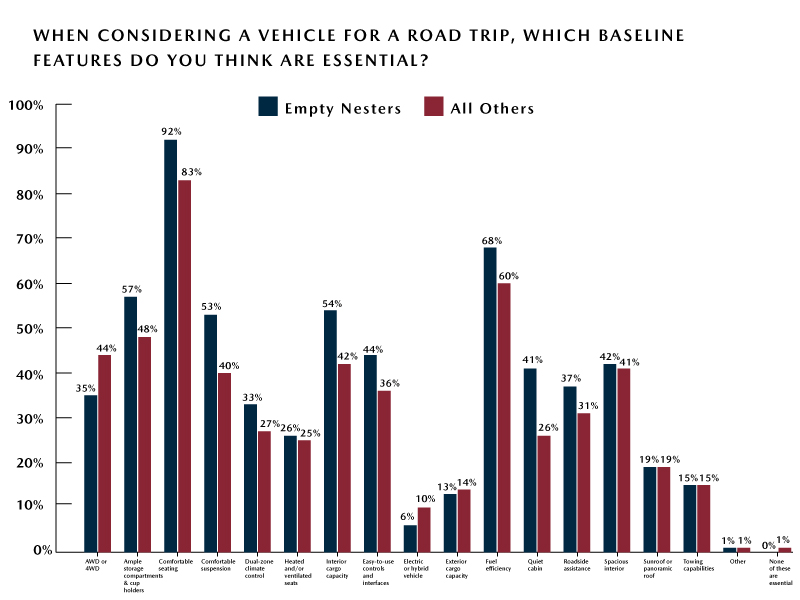
To get even more specific, empty nesters are more likely to find the following baseline vehicle features essential in a road trip vehicle:
● Quiet cabin: 58% more likely than all others
● Comfortable suspension: 33% more likely than all others
● Interior cargo capacity: 29% more likely than all others
● Dual-zone climate control: 22% more likely than all others
● Easy-to-use control and interfaces: 22% more likely than all other
● Ample storage compartments & cup holders: 19% more likely than all others
● Roadside assistance: 19% more likely than all others
● Fuel efficiency: 13% more likely than all others
● Comfortable seating:11% more likely than all others
From the above, it’s clear that empty nesters prefer road trip vehicles equipped with features that enhance comfort with generous cargo space. These essential baseline features enable these travelers to effortlessly cover longer distances. Empty nesters also notably prioritize fuel efficiency more than any other group. Given the longer and more adventurous road trips they have planned for this summer, these preferences make sense.
The Mazda innovative human-centric design philosophy ensures the driver's seat aligns with the body’s natural posture, creating a seamless reaction to the vehicle’s movements. Inside models like the CX-70, drivers can also experience available Nappa leather-trimmed seats with easy-to-use personalization settings, giving you the ultimate ride in comfort and luxury on your adventure.
Mazda: Road trip vehicles built with comfort and efficiency
Whether you’re seeking an off-road capable crossover SUV for outdoor adventures such as the Mazda CX-50, a 2-row SUV with generous cargo space like the CX-70, (also available as a plug-in hybrid), or a delightfully smooth and cozy ride such as our Mazda3 Sedan, our lineup has you covered. Designed with comfort, connectedness, and responsive handling in mind, you can feel confident driving longer distances, enjoying every moment of the journey as much as your destination.
Explore our wide range of vehicles online or schedule a test drive at a Mazda dealership near you to personally experience how Mazda vehicles can enhance your road trip adventures.
This article is intended for general informational purposes only and is based on the latest competitive information available at the time of posting. Information herein is subject to change without notice and without Mazda incurring any obligations. Please review a variety of resources prior to making a purchasing decision. Visit Resource Center for more articles.




















